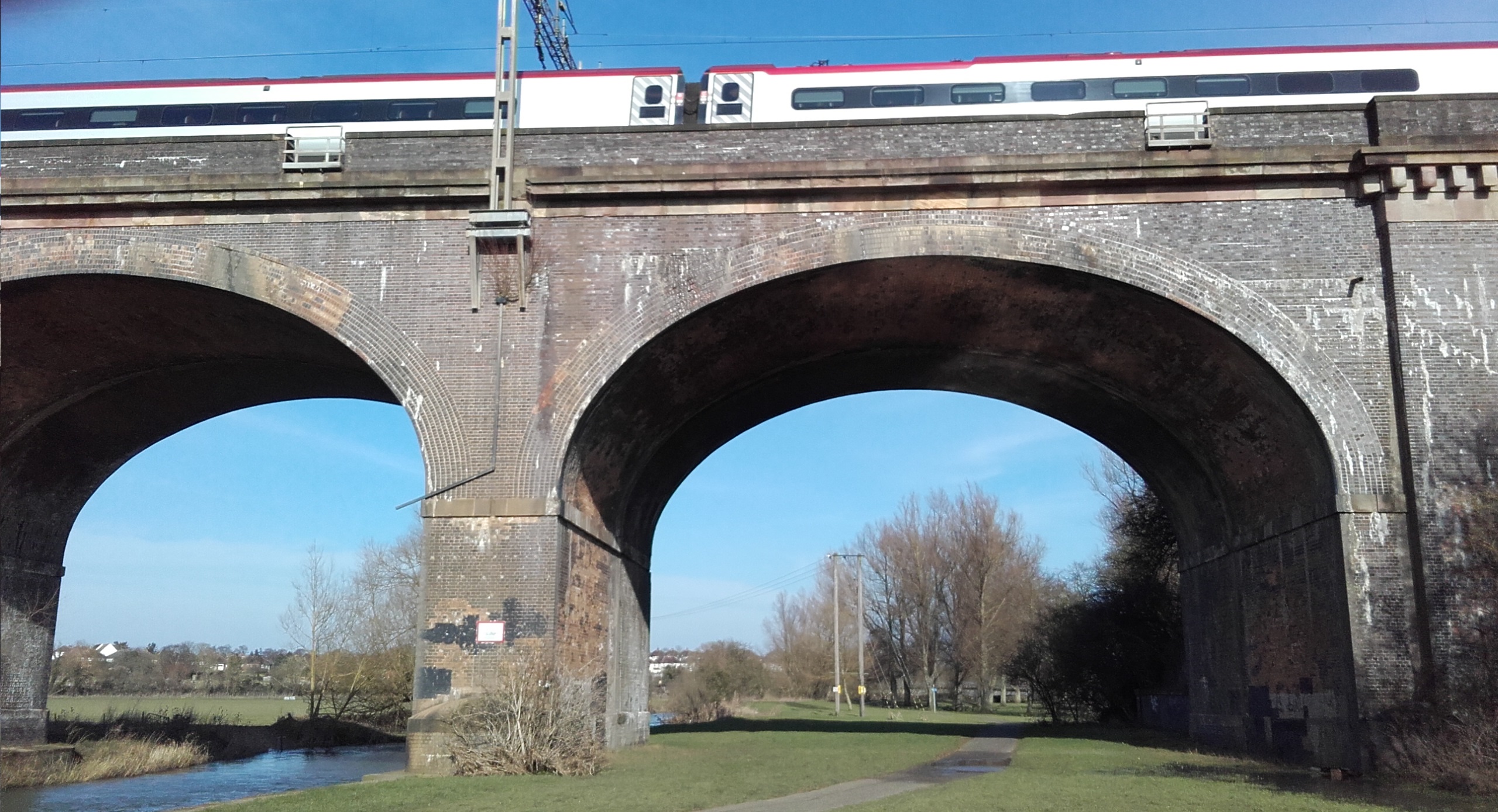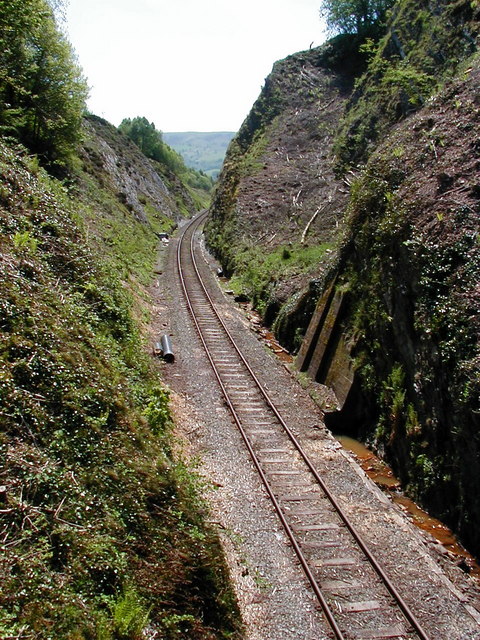|
Greenside Tunnel
Greenside Tunnel is a former railway tunnel in Pudsey, West Yorkshire, England. History Greenside Tunnel was built when the branch line from Stanningley to Pudsey Greenside was extended towards Laisterdyke, resulting in the line known as Pudsey Loop. The tunnel was opened in 1893 as an extension to the railway from the former Pudsey Greenside railway station which was originally built as a terminal station. Since the railway line closed on 15 July 1964, it has been out of use and has been fenced off. Around 2006, planning permission had been granted to fill in the tunnel and the adjoining cuttings, but work has not started yet. Partial landfill has begun as of spring 2018. An application has been made to Leeds city council for complete full landfill as of October 2018 Description The tunnel is located west of the site of Pudsey Greenside railway station and of the bridge leading Carlisle Road across the former line, and east of a bridge of Smalewell Quarry track, beneath th ... [...More Info...] [...Related Items...] OR: [Wikipedia] [Google] [Baidu] |
Pudsey
Pudsey is a market town in the City of Leeds, City of Leeds Borough in West Yorkshire, England. It is located midway between Bradford, Bradford city centre and Leeds city centre. Historic counties of England, Historically in the West Riding of Yorkshire, it has a population of 22,408. History The place-name ''Pudsey'' is first recorded in 1086 in the Domesday Book as ''Podechesai(e)''. Its etymology is rather uncertain: it seems most likely to derive from a putative personal name *''Pudoc'' and the word ''ēg'' meaning 'island' but here presumably referring metaphorically to an 'island' of good ground in moorland. Thus the name would mean 'Pudoc's island'. Other possibilities have been suggested, however. In the early sixth century the district was in the Kingdom of Elmet, which seems to have retained its Celtic character for perhaps as many as two centuries after other neighbouring kingdoms had adopted the cultural identity of the Angles. Around 1775, a cache of a 100 silver ... [...More Info...] [...Related Items...] OR: [Wikipedia] [Google] [Baidu] |
Retaining Wall
Retaining walls are relatively rigid walls used for supporting soil laterally so that it can be retained at different levels on the two sides. Retaining walls are structures designed to restrain soil to a slope that it would not naturally keep to (typically a steep, near-vertical or vertical slope). They are used to bound soils between two different elevations often in areas of terrain possessing undesirable slopes or in areas where the landscape needs to be shaped severely and engineered for more specific purposes like hillside farming or roadway overpasses. A retaining wall that retains soil on the backside and water on the frontside is called a seawall or a bulkhead. Definition A wall for holding in place a mass of earth or the like, as at the edge of a terrace or excavation. A retaining wall is a structure designed and constructed to resist the lateral pressure of soil, when there is a desired change in ground elevation that exceeds the angle of repose of the soil. A basement ... [...More Info...] [...Related Items...] OR: [Wikipedia] [Google] [Baidu] |
Tunnels In West Yorkshire
A tunnel is an underground passageway, dug through surrounding soil, earth or rock, and enclosed except for the entrance and exit, commonly at each end. A pipeline is not a tunnel, though some recent tunnels have used immersed tube construction techniques rather than traditional tunnel boring methods. A tunnel may be for foot or vehicular road traffic, for rail traffic, or for a canal. The central portions of a rapid transit network are usually in the tunnel. Some tunnels are used as sewers or aqueducts to supply water for consumption or for hydroelectric stations. Utility tunnels are used for routing steam, chilled water, electrical power or telecommunication cables, as well as connecting buildings for convenient passage of people and equipment. Secret tunnels are built for military purposes, or by civilians for smuggling of weapons, contraband, or people. Special tunnels, such as wildlife crossings, are built to allow wildlife to cross human-made barriers safely. Tu ... [...More Info...] [...Related Items...] OR: [Wikipedia] [Google] [Baidu] |
Buttress
A buttress is an architectural structure built against or projecting from a wall which serves to support or reinforce the wall. Buttresses are fairly common on more ancient buildings, as a means of providing support to act against the lateral (sideways) forces arising out of inadequately braced roof structures. The term ''counterfort'' can be synonymous with buttress and is often used when referring to dams, retaining walls and other structures holding back earth. Early examples of buttresses are found on the Eanna Temple (ancient Uruk), dating to as early as the 4th millennium BC. Terminology In addition to flying and ordinary buttresses, brick and masonry buttresses that support wall corners can be classified according to their ground plan. A clasping or clamped buttress has an L shaped ground plan surrounding the corner, an angled buttress has two buttresses meeting at the corner, a setback buttress is similar to an angled buttress but the buttresses are set back from the ... [...More Info...] [...Related Items...] OR: [Wikipedia] [Google] [Baidu] |
Engineering Brick
Engineering bricks are a type of brick used where strength, low water porosity or acid (flue gas) resistance are needed. Engineering bricks can be used for damp-proof courses. Clay engineering bricks are defined in ''§ 6.4.51'' of ''British Standard BS ISO 6707-1;2014 (buildings & civil engineering works - vocabulary - general terms)'' as "fire-clay brick that has a dense and strong semi-vitreous body and which conforms to defined limits for water absorption and compressive strength" Stronger and less porous engineering bricks (UK Class A) are usually blue due to the higher firing temperature whilst class B bricks are usually red. Class A bricks have a strength of and water absorption of less than 4.5%; Class B bricks have a strength greater than and water absorption of less than 7%. Accrington brick is a type of engineering brick that was used in the construction of the foundations in the Empire State Building The Empire State Building is a 102-story Art Deco skyscra ... [...More Info...] [...Related Items...] OR: [Wikipedia] [Google] [Baidu] |
Arch
An arch is a vertical curved structure that spans an elevated space and may or may not support the weight above it, or in case of a horizontal arch like an arch dam, the hydrostatic pressure against it. Arches may be synonymous with vaults, but a vault may be distinguished as a continuous arch forming a roof. Arches appeared as early as the 2nd millennium BC in Mesopotamian brick architecture, and their systematic use started with the ancient Romans, who were the first to apply the technique to a wide range of structures. Basic concepts An arch is a pure compression form. It can span a large area by resolving forces into compressive stresses, and thereby eliminating tensile stresses. This is sometimes denominated "arch action". As the forces in the arch are transferred to its base, the arch pushes outward at its base, denominated "thrust". As the rise, i. e. height, of the arch decreases the outward thrust increases. In order to preserve arch action and prevent collapse ... [...More Info...] [...Related Items...] OR: [Wikipedia] [Google] [Baidu] |
Masonry
Masonry is the building of structures from individual units, which are often laid in and bound together by mortar; the term ''masonry'' can also refer to the units themselves. The common materials of masonry construction are bricks, building stone such as marble, granite, and limestone, cast stone, concrete blocks, glass blocks, and adobe. Masonry is generally a highly durable form of construction. However, the materials used, the quality of the mortar and workmanship, and the pattern in which the units are assembled can substantially affect the durability of the overall masonry construction. A person who constructs masonry is called a mason or bricklayer. These are both classified as construction trades. Applications Masonry is commonly used for walls and buildings. Brick and concrete block are the most common types of masonry in use in industrialized nations and may be either load-bearing or non-load-bearing. Concrete blocks, especially those with hollow cores, offer va ... [...More Info...] [...Related Items...] OR: [Wikipedia] [Google] [Baidu] |
Illegal Dumping
Illegal dumping, also called fly dumping or fly tipping ( UK), is the dumping of waste illegally instead of using an authorized method such as curbside collection or using an authorized rubbish dump. It is the illegal deposit of any waste onto land, including waste dumped or tipped on a site with no license to accept waste. The United States Environmental Protection Agency developed a “profile” of the typical illegal dumper. Characteristics of offenders include local residents, construction and landscaping contractors, waste removers, scrap yard operators, and automobile and tire repair shops. Terminology Illegal dumping is typically distinguished from littering by the type and amount of material and/or the manner in which it is discarded. An example of littering could be throwing a cigarette on the ground. However, emptying a rubbish bin with no permission in a public or private area can be classified as illegal dumping. The term ''fly tipping'' is derived from the verb '' ... [...More Info...] [...Related Items...] OR: [Wikipedia] [Google] [Baidu] |
Cut (earthmoving)
In civil engineering, a cut or cutting is where soil or rock from a relative rise along a route is removed. The term is also used in river management to speed a waterway's flow by short-cutting a meander. Cuts are typically used in road, rail, and canal construction to reduce the length and grade of a route. Cut and fill construction uses the spoils from cuts to fill in defiles to cost-effectively create relatively straight routes at steady grades. Cuts are used as alternatives to indirect routes, embankments, or viaducts. They also have the advantage of comparatively lower noise pollution than elevated or at-grade solutions. History The term ''cutting'' appears in the 19th century literature to designate rock cuts developed to moderate grades of railway lines. ''Railway Age's Comprehensive Railroad Dictionary'' defines a cut as "a passage cut for the roadway through an obstacle of rock or dirt." Creation Cuts can be created by multiple passes of a shovel, grader, scrap ... [...More Info...] [...Related Items...] OR: [Wikipedia] [Google] [Baidu] |
Ventilation Shaft
In subterranean civil engineering, ventilation shafts, also known as airshafts or vent shafts, are vertical passages used in mines and tunnels to move fresh air underground, and to remove stale air. In architecture, an airshaft is a small, vertical space within a tall building which permits ventilation of the building's interior spaces to the outside. The floor plan of a building with an airshaft is often described as a "square donut" shape. Alternatively, an airshaft may be formed between two adjacent buildings. Windows on the interior side of the donut allow air from the building to be exhausted into the shaft, and, depending on the height and width of the shaft, may also allow extra sunlight inside. See also * Ventilation (architecture) * Stack effect * Underground mine ventilation * Courtyard * Lightwell * Skylight * Atrium (architecture) In architecture, an atrium (plural: atria or atriums) is a large open-air or skylight-covered space surrounded by a building. Atria ... [...More Info...] [...Related Items...] OR: [Wikipedia] [Google] [Baidu] |
Great Northern Railway (Great Britain)
The Great Northern Railway (GNR) was a British railway company incorporated in 1846 with the object of building a line from London to York. It quickly saw that seizing control of territory was key to development, and it acquired, or took leases of, many local railways, whether actually built or not. In so doing, it overextended itself financially. Nevertheless, it succeeded in reaching into the coalfields of Nottinghamshire, Derbyshire and Yorkshire, as well as establishing dominance in Lincolnshire and north London. Bringing coal south to London was dominant, but general agricultural business, and short- and long-distance passenger traffic, were important activities too. Its fast passenger express trains captured the public imagination, and its Chief Mechanical Engineer Nigel Gresley became a celebrity. Anglo-Scottish travel on the East Coast Main Line became commercially important; the GNR controlled the line from London to Doncaster and allied itself with the North Ea ... [...More Info...] [...Related Items...] OR: [Wikipedia] [Google] [Baidu] |
Pudsey Loop Line Railway
The Pudsey loop was a railway line in the former West Riding of Yorkshire, England, which served the town of Pudsey and later offered a second connection between Bramley in the east and Laisterdyke and Dudley Hill in the west, in addition to the existing line between Leeds and Bradford Exchange station. It was opened by the Great Northern Railway as a dead-end branch from Stanningley to Pudsey in 1877. However there was demand for a better connection with the main line network, and the line was extended to make a through route. Considerable earthworks and a tunnel made this a difficult work to execute. The line opened in 1895 and became used as a through route, as an alternative to the earlier line. Declining use eventually led to closure in 1964. Demand for a railway The Great Northern Railway route between Leeds and Bradford had been built by the Leeds, Bradford and Halifax Junction Railway and opened in 1854. The GNR operated the trains from the outset, and took it ove ... [...More Info...] [...Related Items...] OR: [Wikipedia] [Google] [Baidu] |






